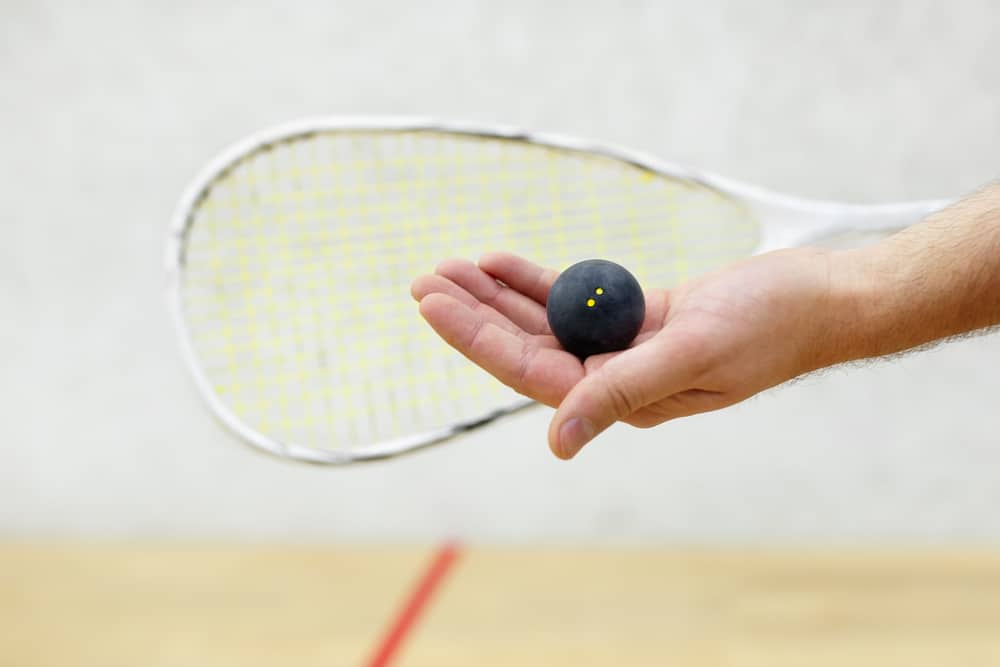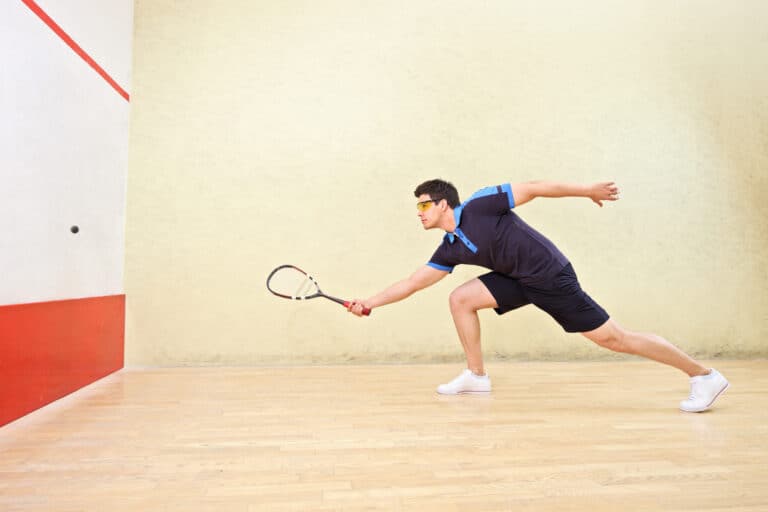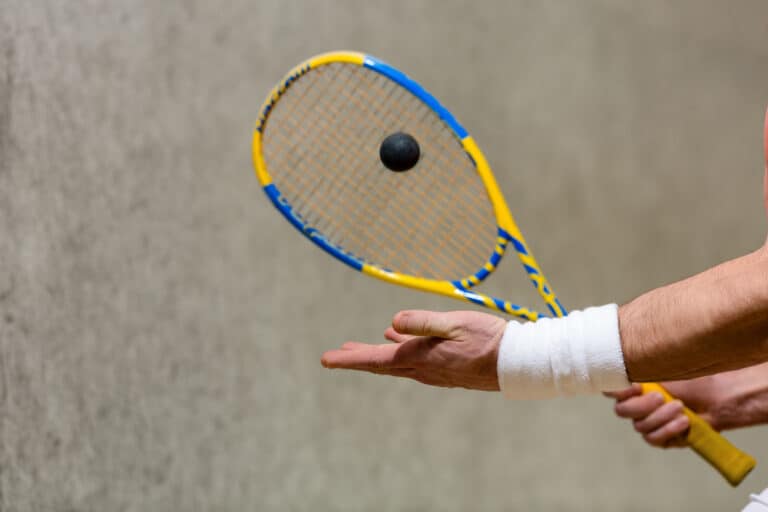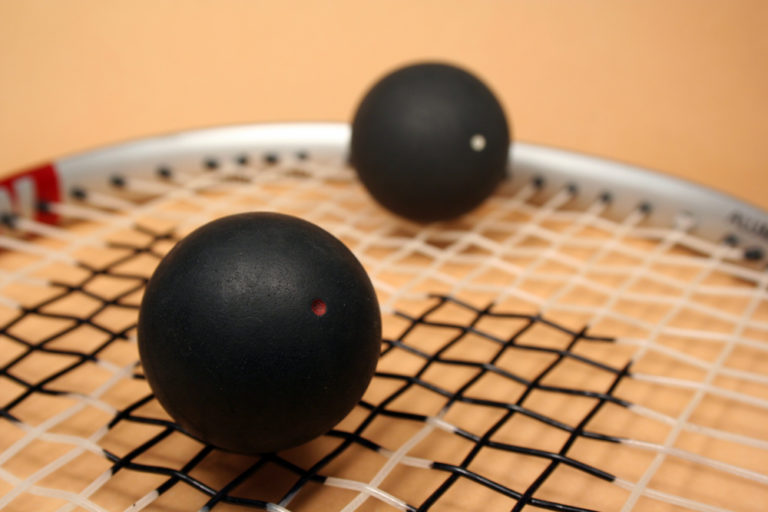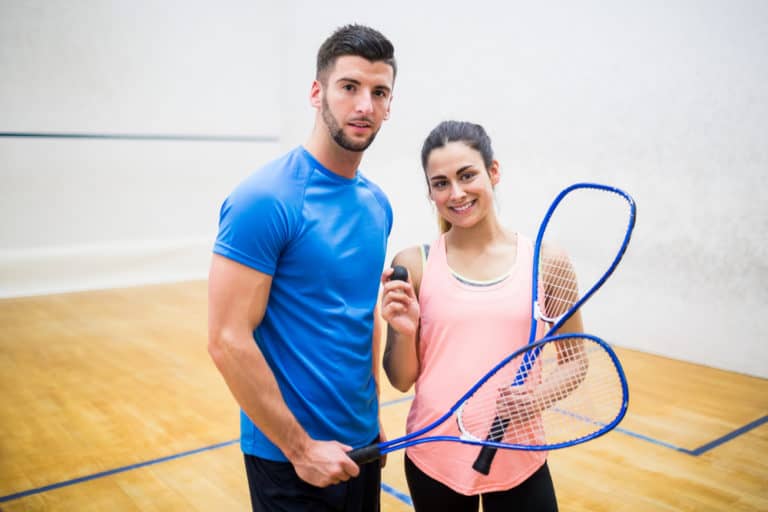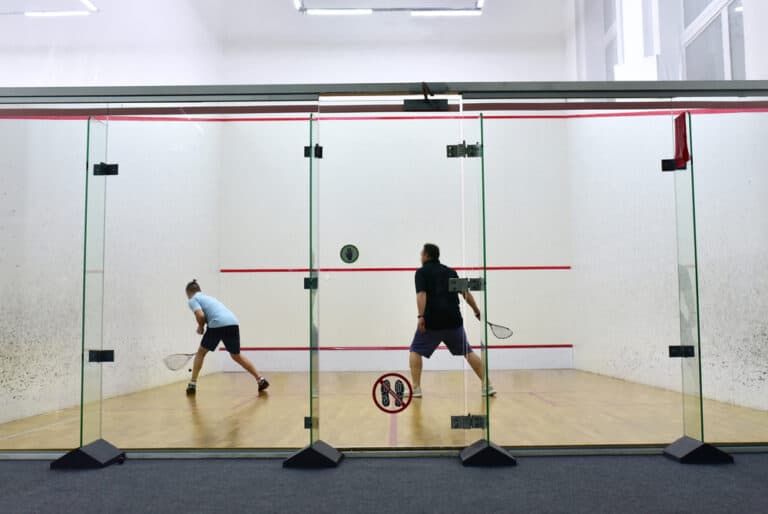Who Serves First In Squash?
Squash is a racket sport perfect for competitive adrenaline seekers looking to work up a sweat! I play casually and competitively, and I notice that the service rules can be a little unclear for some beginners and even intermediates. So, who serves first in squash?
The squash player to serve first is the one who correctly calls the arrow illustrations on the butt of a spinning squash racket. Before a game, players choose the up or down arrow, place the racket upside down on the floor, and spin it. The arrow pointing up decides which player will serve first.
If you’re gearing up for your next squash game and want to start with the right amount of confidence, you’re in the right place! We’ll discuss the process of serving first, player positioning related to service, sides, faulty serves, and typical calls you can expect from referees.
Who Serves First In Squash?
The first serving is the one who wins the coin toss, or in this case – racket spin. Squash rackets typically have an imprinted logo or illustration with arrows on the butt of the handle.
You start by asking your opponent whether they want to go with the arrow pointing up or down (like choosing heads or tails). Place your racket upside-down on the floor so that the butt of your racket is facing up, and position the handle between both hands in an open-palm fashion.
Finally, in a quick jerk motion, pull one hand back while you push the other forward to cause the racket to spin on the ground momentarily. After it falls, examine the arrows; whichever player chose the upward-pointing arrow pointing upward will serve first.
Which Player Serves The Following Game?
The previous game’s winner will be able to serve in the new game.
While the first serve between opponents requires spinning a racket, the server for every other game afterward will be the player that won the game.
Which Side Do You Serve In Squash?
When you win a point, you have the opportunity to choose which side to serve. If you win consecutive points, then you can swap to any side.
The victor of the previous game serves first to begin a new game. You may select which side to serve only the first time you win the service back. As long as you maintain winning consecutive points, you have the liberty to keep swapping which side you serve.
Do You Lose Points From A Faulty Service?
Players who make a service where the ball lands outside the established boundaries do not lose a point, but the opponent gains a point.
If you do a faulty service by hitting the ball outside the boundaries, you may hear the referee decree fault, which means you served the ball below or out of the specified areas. Similarly, if your service has the ball hitting the outer-top line or above it, the referee will declare it out.
It is vital that you have at least one foot in the service box when serving, and the ball must land on the front wall between the service line and the top line, move past the short line, and land on the side of the half-court line opposite from where your opponent will be.
If the ball touches the service line or below, the short line, or the half-court line, it’s a fault, and the point goes to the opposition. The same holds true if the ball lands over the outer line.
Does The Ball Have To Bounce After A Serve?
Players do not have to wait for the ball to bounce before returning it.
The choice of whether to return the ball immediately or slow the pace of the game depends on you as the player. Remember, your choice may have the potential to throw your opponent off-guard if you include a lot of mix-ups and unpredictability in your strategy.
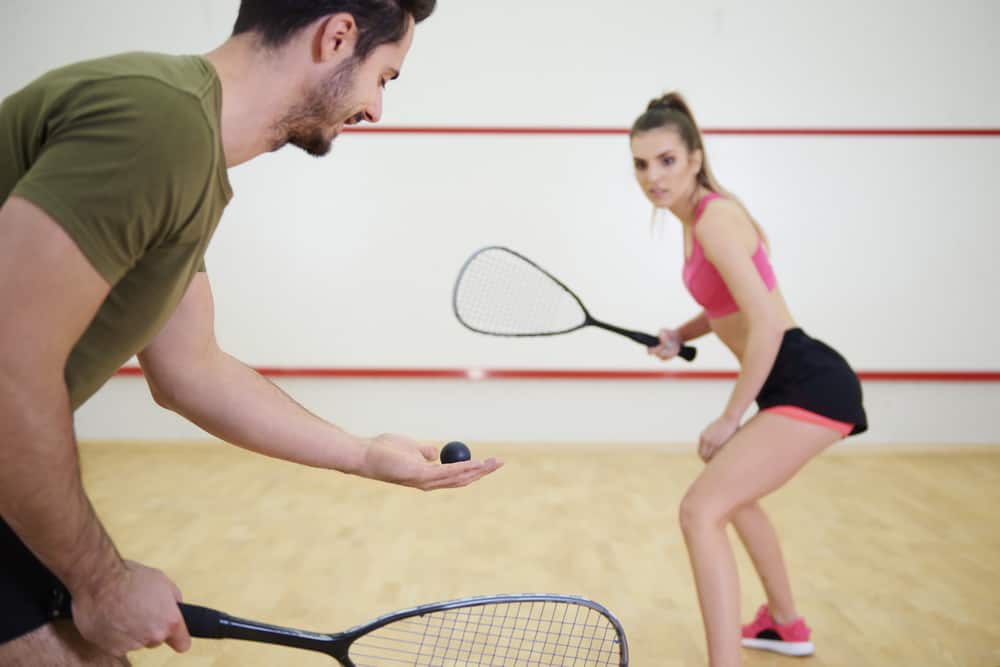
What Is A Handout?
A handout indicates that a player served but lost the point, awarding the non-serving player with a point as a handout, having them serve instead.
When player A does a service, but player B plays well and wins, player B gets the point, plus they get to do the next service. The referee refers to this call as a handout.
Can Players Body-Block And Prevent Returning Shots?
In a situation where one player interferes with another player’s ability to return the ball, the referee makes the final call on whether or not to award a point or have players replay the point.
Interference can happen regularly in squash after a serve or during a rally. While it is seldom a purposeful attempt to obstruct the other player, a referee exists to ensure fair play between competitors.
If there is any interference by your opponent on your way to the ball or you think it is unsafe for you to play the ball, then you’ll need to stop immediately and raise the obstruction with the referee.
The referee will consider both players’ positions and decide whether the final result is a let, no-let, or stroke.
A let refers to a situation with minimal interference, and the opposition is trying their best to avoid obstructing the way. The referee will have players replay the point.
A no-let is the opposite call to a let, in that the referee deems no interference. You had sufficient space, and it was safe to return the ball, and your opponent will get the point.
Finally, a stroke is a call implying there was no way to play a shot safely because the opponent was clearly in the way of making a swing. Albeit not intentional, it will award you the point if the call is against your opponent and to your opponent if the call is against you.
Conclusion
With a twist and turn of a squash racket, players make a call on whether they want an up or down arrow and see how a turning racket will fall to decide who serves first. Of course, ensure you hit the ball in all the right places; otherwise, you might forfeit your point and pass your service opportunity to your opponent.

